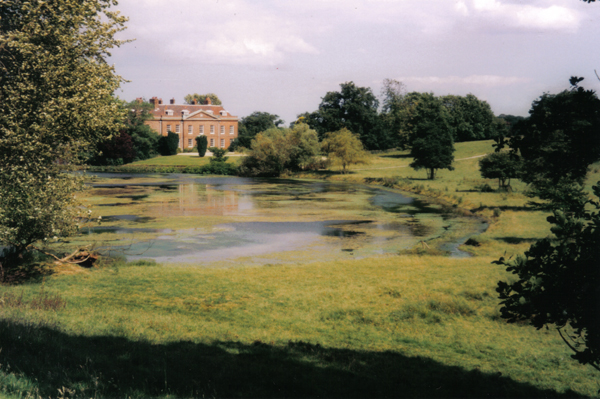Well, Lincolnshire on:
[Wikipedia]
[Google]
[Amazon]
Well is a small estate village and
 Grove House is a Victorian
Grove House is a Victorian
civil parish
In England, a civil parish is a type of administrative parish used for local government. It is a territorial designation which is the lowest tier of local government below districts and counties, or their combined form, the unitary authority ...
about south of the town of Alford, in the East Lindsey
East Lindsey is a local government district in Lincolnshire, England. The population of the district council was 136,401 at the 2011 census. The council is based in Manby. Other major settlements in the district include Alford, Wragby, Spilsby ...
district of Lincolnshire
Lincolnshire (abbreviated Lincs.) is a county in the East Midlands of England, with a long coastline on the North Sea to the east. It borders Norfolk to the south-east, Cambridgeshire to the south, Rutland to the south-west, Leicestershire ...
, England. The population of the civil parish was 166 at the 2011 census. It is situated on the foot of the east entry to the Lincolnshire Wolds
The Lincolnshire Wolds are a range of low hills in the county of Lincolnshire, England which run roughly parallel with the North Sea coast, from the Humber Estuary in the north-west to the edge of the Lincolnshire Fens in the south-east. They ar ...
. The population of 166 as at the 2011 census includes the hamlet of Claxby St. Andrew. The village provides views of the gradually sloping hills towards the west.
The name 'Well' comes from the Old English
Old English (, ), or Anglo-Saxon, is the earliest recorded form of the English language, spoken in England and southern and eastern Scotland in the early Middle Ages. It was brought to Great Britain by Anglo-Saxon settlement of Britain, Anglo ...
word ''wella'' meaning 'spring/stream'.
Geography and landmarks
In the village there is a church, telephone box, and post box, and a bus shelter with a CallConnect bus service. Thecricket
Cricket is a bat-and-ball game played between two teams of eleven players on a field at the centre of which is a pitch with a wicket at each end, each comprising two bails balanced on three stumps. The batting side scores runs by striki ...
club in Well serves Alford and the surrounding area; its ground holds cricket matches and summer car boot sales, and Guy Fawkes Night
Guy Fawkes Night, also known as Guy Fawkes Day, Bonfire Night and Fireworks Night, is an annual commemoration observed on 5 November, primarily in Great Britain, involving bonfires and fireworks displays. Its history begins with the ev ...
celebrations on 4 and 6 November.
The parish church is dedicated to Saint Margaret, and was built of red brick in 1733 around the same time as Well Vale House. It was altered in the late 18th century, restored in 1959, and is a Grade I listed building
In the United Kingdom, a listed building or listed structure is one that has been placed on one of the four statutory lists maintained by Historic England in England, Historic Environment Scotland in Scotland, in Wales, and the Northern Irel ...
.
 Grove House is a Victorian
Grove House is a Victorian country house
An English country house is a large house or mansion in the English countryside. Such houses were often owned by individuals who also owned a town house. This allowed them to spend time in the country and in the city—hence, for these peopl ...
surrounded by gardens and built in 1853 of brick, situated on the edge of the Well Hall Park.
Well Hall Park was first laid out in the early 18th century after the damming of Well Beck
Beck David Hansen (born Bek David Campbell; July 8, 1970) is an American musician, singer, songwriter, and record producer. He rose to fame in the early 1990s with his Experimental music, experimental and Lo-fi music, lo-fi style, and became ...
to create two lakes, and included moving the village of Well to its present site.
The ''National Heritage List for England'' calls it Well Vale Park, and describes it as a former red brick country house, now a private school, which is Grade II* listed, dating from the early 17th century, altered about 1730 for James Bateman, and extended in the late 18th century for Francis Dashwood. It was partly destroyed Fire in 1845, and rebuilt in 1925 by Guy Elwes.
Thomas Allen, in his ''The History of the County of Lincoln, From the Earliest Period to the Present Time'', wrote:
References
External links
* {{authority control Villages in Lincolnshire Civil parishes in Lincolnshire East Lindsey District